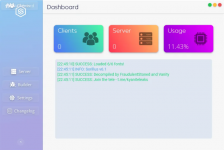
Key Features of EdgeGuard Stealer 2025
1. Data Theft Capabilities
- Browser Data Extraction : Harvests saved passwords, autofill data, and cookies from Chrome, Firefox, Edge, and Opera.
- Cryptocurrency Wallet Theft : Targets Exodus, MetaMask, Electrum, and other wallets by stealing private keys and seed phrases.
- FTP & Email Credentials : Extracts login details from FileZilla, WinSCP, Thunderbird, and Outlook.
- System Information : Collects OS details, hardware specifications, installed software, and network configurations.
2. Evasion & Persistence
- Anti-Debugging : Detects sandbox environments and virtual machines to avoid analysis.
- Process Injection : Injects into legitimate processes to remain undetected.
- Persistence Mechanisms : Modifies registry keys or schedules tasks to maintain access.
3. Exfiltration & C2 Communication
- Encrypted Data Transfer : Uses HTTPS or custom protocols to send stolen data to a C2 server.
- Telegram & Discord Bot Integration : Allows real-time notifications upon successful data theft.
- Dynamic Configurations : Supports JSON-based configs for target selection and execution flow.
4. Cross-Platform Compatibility
- Works on Windows (7/10/11), Linux (via Wine compatibility), and macOS (experimental support).
5. Open-Source & Customizable
- Modular Codebase : Enables adding new stealers or evasion techniques.
- Builder Tool : Generates customized payloads with unique C2 settings.
Additional Insights & Cybersecurity Implications
EdgeGuard Stealer 2025 represents the evolving sophistication of malware, emphasizing the need for robust endpoint protection, network monitoring, and user awareness. Security researchers can analyze its source code to develop detection signatures, while organizations must enforce strict access controls and multi-factor authentication (MFA) to mitigate risks.Ethical hacking communities can use this knowledge to simulate attacks and strengthen defenses. However, the availability of such tools in underground forums increases cybercrime risks, necessitating proactive threat intelligence and incident response strategies.
